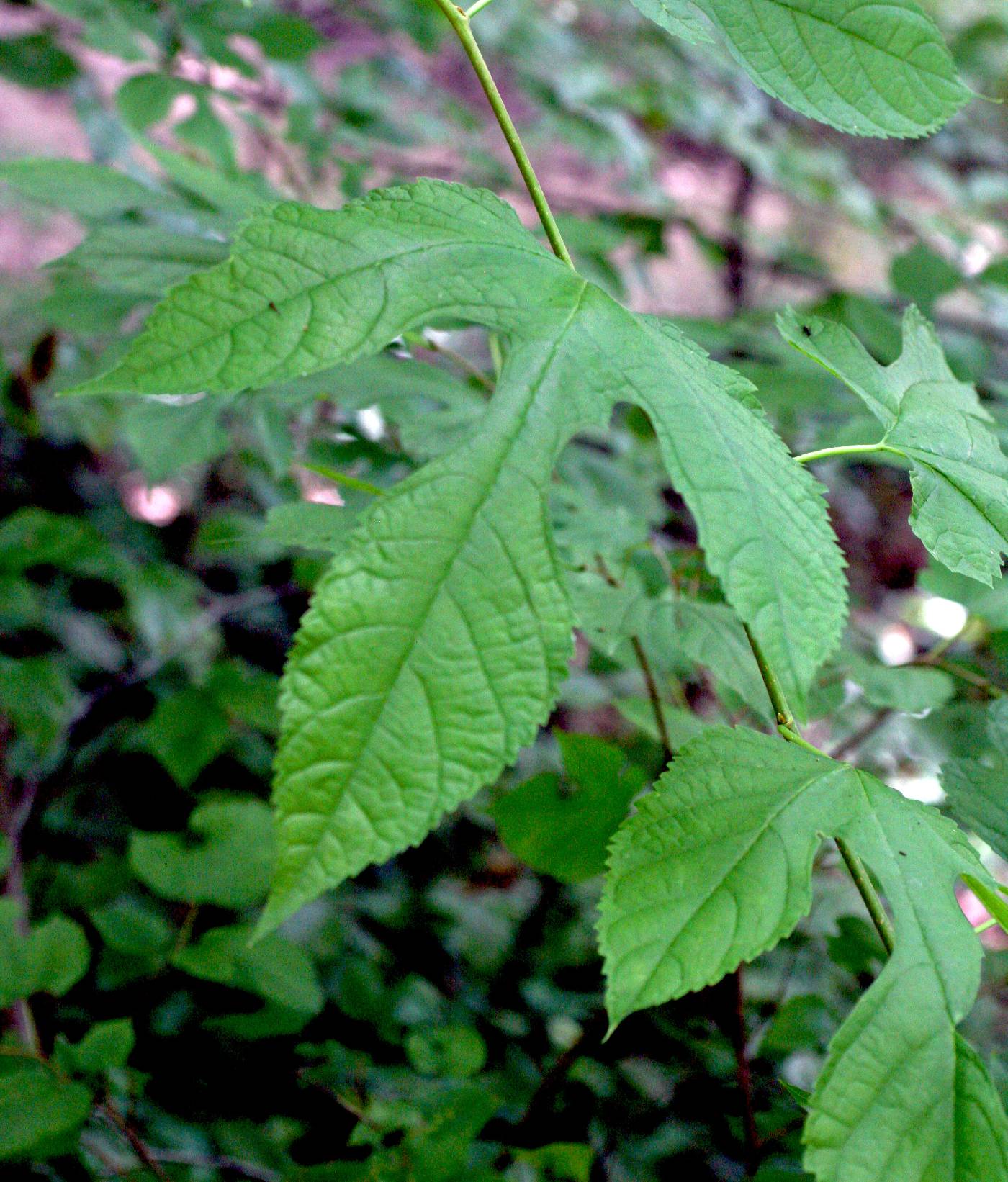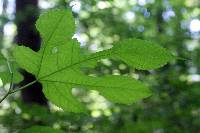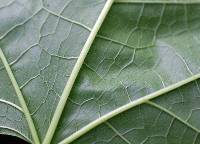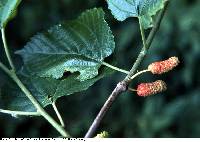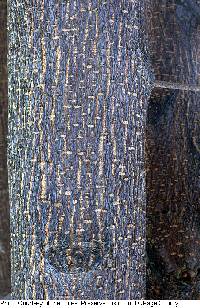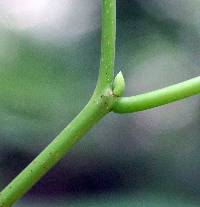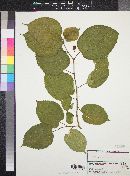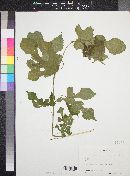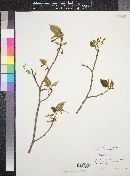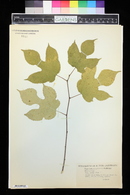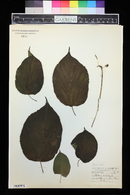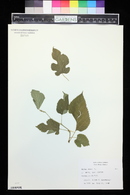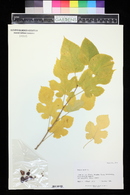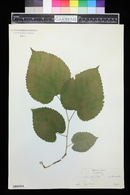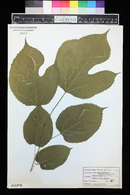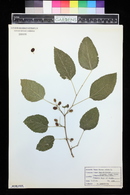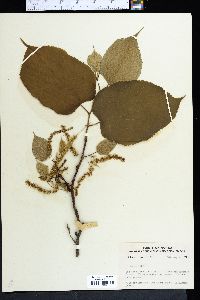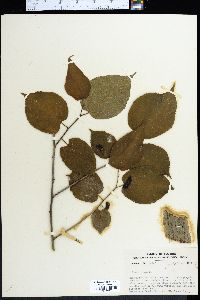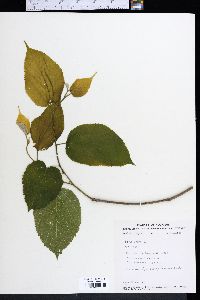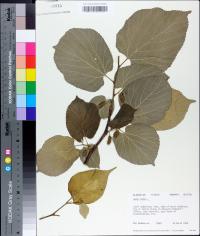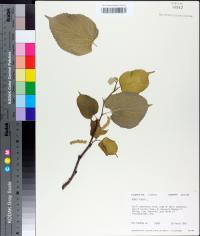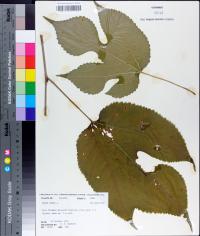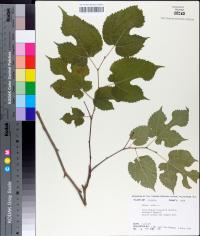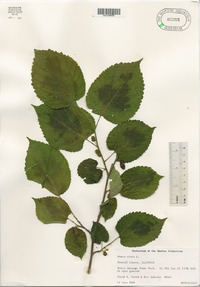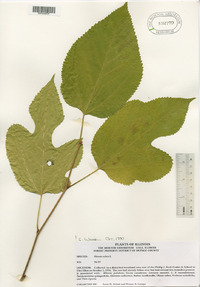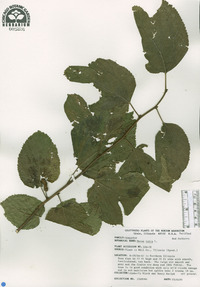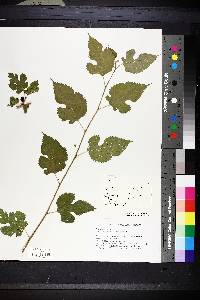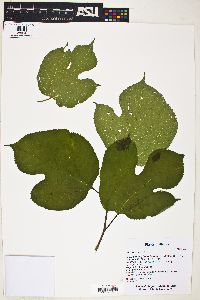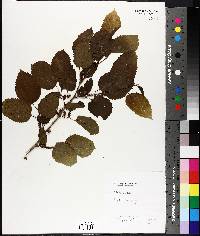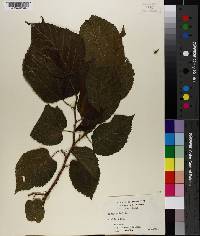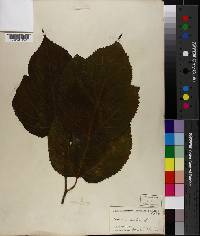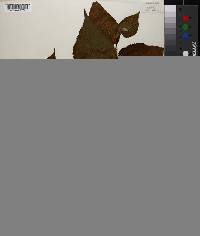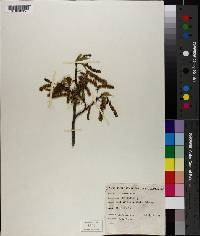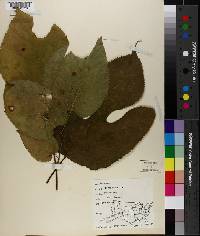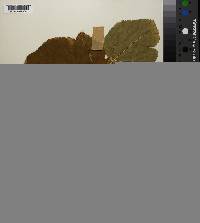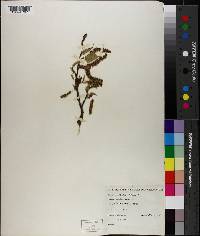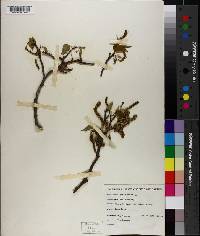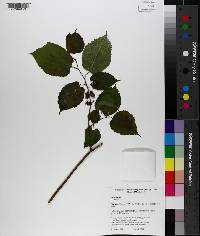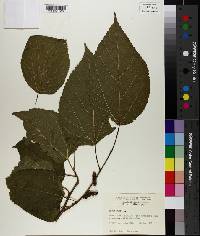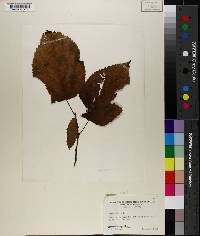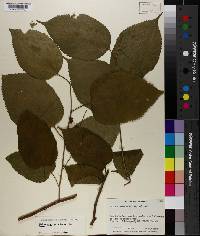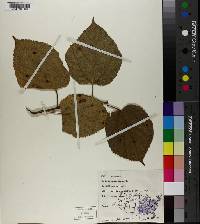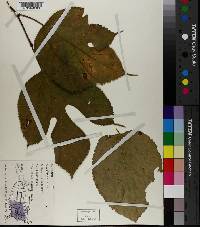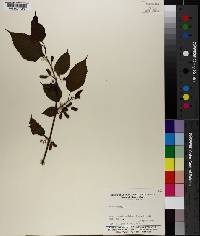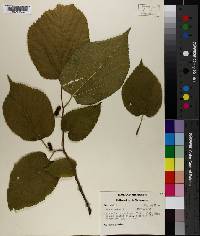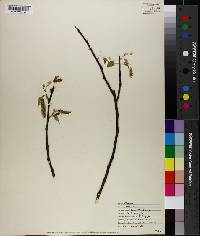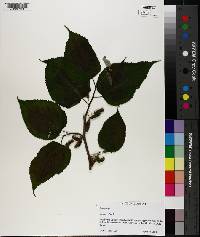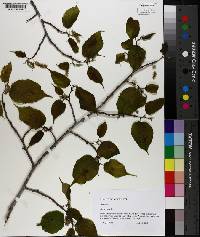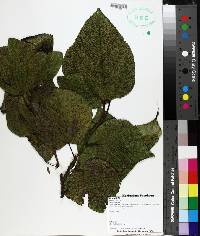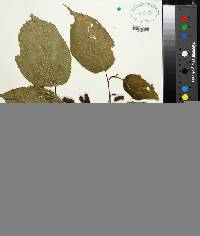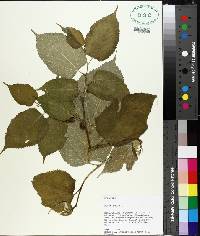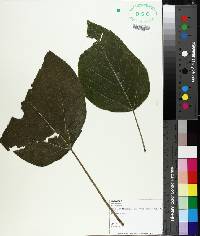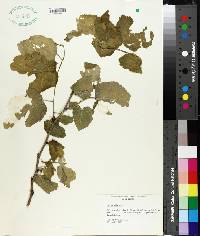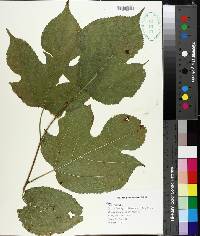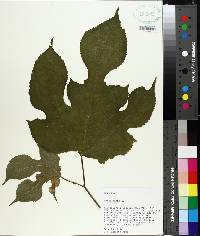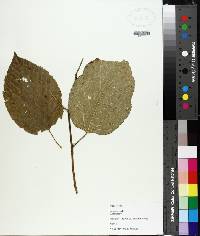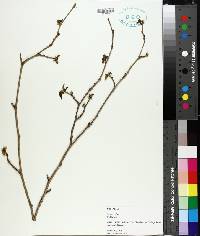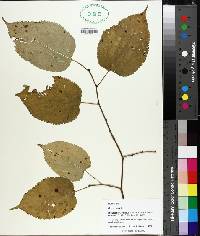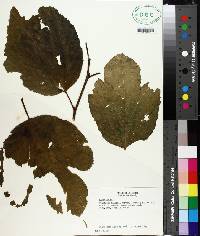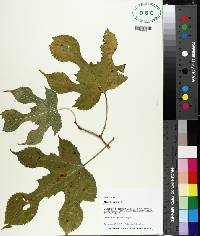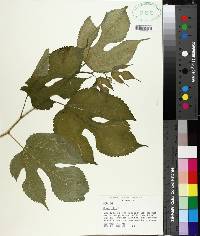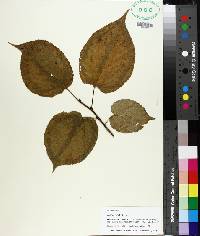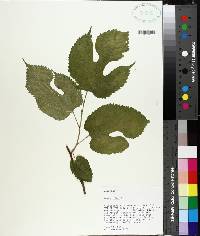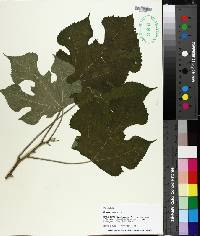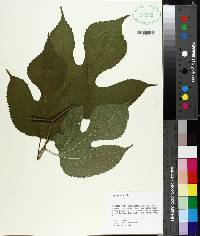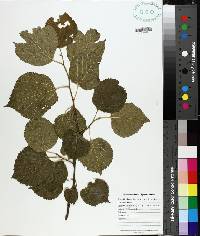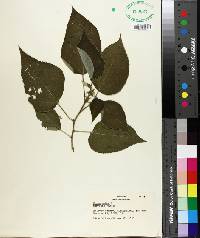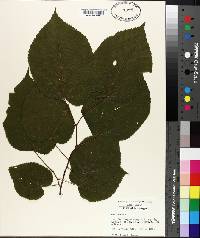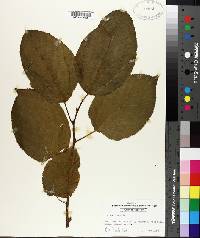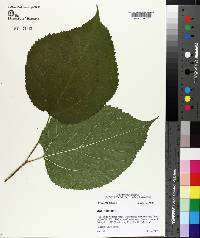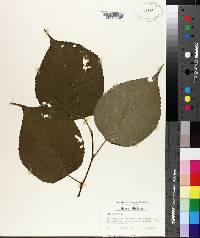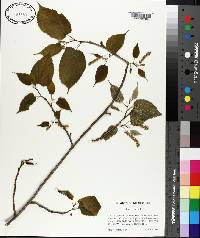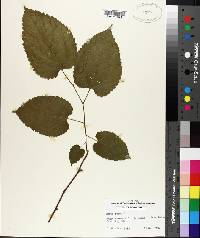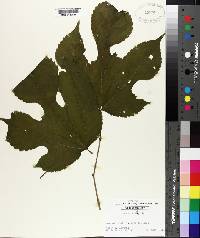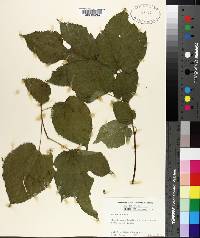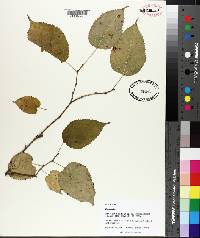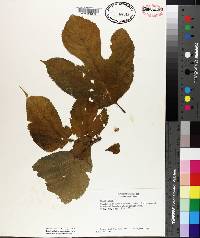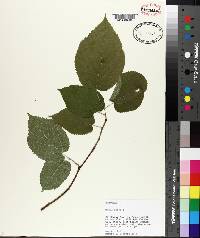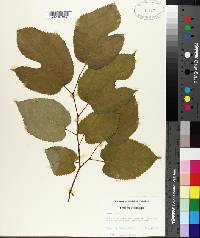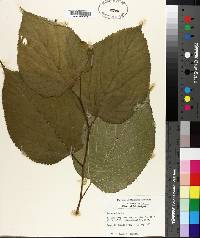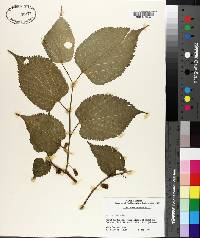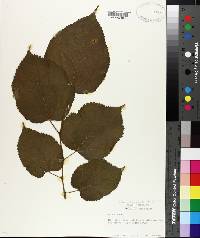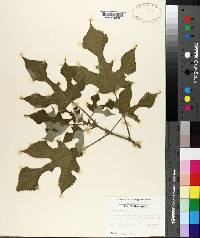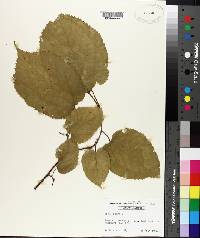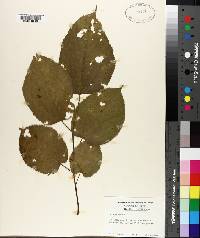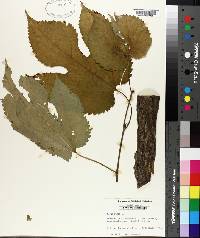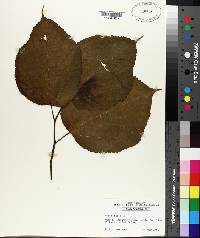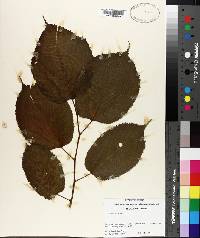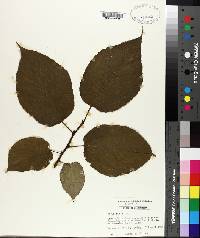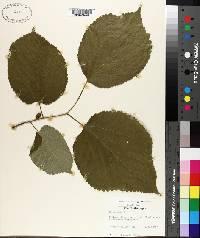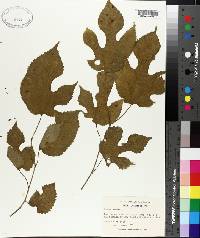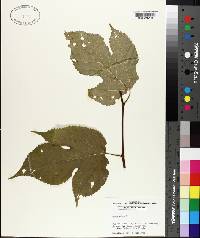Morus rubra
|
|
|
|
Family: Moraceae
Red Mulberry
[Morus pensylvanica Nois. ex Loudon, moreMorus rubra f. laevis F. Seym.] |
Shrubs or trees , to 20 m. Bark gray-brown with orange tint, furrows shallow, ridges flat, broad. Branchlets red-brown to light greenish brown, glabrous or with a few trichomes; lenticels light colored, elliptic, prominent. Buds ovoid, slightly compressed, 3-7 mm, apex acute; outer scales dark brown, often pubescent and minutely ciliate; leaf scars oval to irregularly circular, bundle scars numerous, in circle. Leaves: stipules linear, 10-13 mm, thin, pubescent; petiole 2-2.5 cm, glabrous or pubescent. Leaf blade broadly ovate, sometimes irregularly lobed, 10-18(-36) × 8-12(-15.5) cm, base rounded to nearly cordate, sometimes oblique, margins serrate or crenate, apex abruptly acuminate; surfaces abaxially sparsely to densely pubescent or puberulent, adaxially with short, antrorsely appressed trichomes, usually scabrous. Catkins: peduncle pubescent; staminate catkins 3-5 cm; pistillate catkins 8-12 × 5-7 mm. Flowers: staminate and pistillate on different plants. Staminate flowers: sepals connate at base, green tinged with red, 2-2.5 mm, pubescent outside, ciliate toward tip; stamens 4; filaments 3-3.5 mm. Pistillate flowers: calyx tightly surrounding ovary; ovary green, broadly ellipsoid or obovoid, slightly compressed, 1.5-2 × 1 mm, glabrous; style branches divergent, whitish, sessile, ca. 1.5 mm; stigma papillose. Syncarps black or deep purple, cylindric, (1.5-)2.5-4(-6) × 1 cm; fleshy calyx surrounding achenes; achenes yellowish, oval, flattened, ca. 2 mm, smooth. Flowering spring-summer. Moist forests and thickets; 0-300 m; Ont.; Ala., Ark., Conn., D.C., Fla., Ga., Ill., Ind., Iowa, Kans., Ky., La., Md., Mass., Mich., Minn., Miss., Mo., Nebr., N.J., N.Y., N.C., Ohio, Okla., Pa., S.C., Tenn., Tex., Vt., Va., W.Va., Wis. Morus rubra is sporadically established along fencerows in southern New Mexico (R. Spellenberg, pers. comm.). Rhode Island is in the range of Morus rubra , although I do not know of any documented specimens. Morus rubra is a common tree of eastern North America. The leaves are highly variable, often with deeply lobed and entire leaves on the same plant. The abaxial surface of the leaf varies from sparsely to densely pubescent. According to D. E. Moerman (1986), Native American tribes used infusions of the bark of Morus rubra medicinally to check dysentery, as a laxative, and as a purgative; infusions of the root for weakness and urinary problems; and tree sap rubbed directly on the skin as treatment for ringworm.
Tree 8 - 20 m tall, trunk 25 - 40 cm in diameter Leaves: alternate, with a stalk that secretes milky sap and linear and hairy stipules. The blade is dark green and smooth to rough above, pale and hairy beneath, 7 - 18 cm long, almost as wide, egg-shaped to nearly rounded with a long and pointed tip, coarsely toothed. The number of lobes is variable (polymorphic), and newer growth is more highly lobed. Leaves turn yellow in fall. Flowers: either male or female, found on different trees (dioecious), borne on short-stalked catkins, male catkins 2 - 5 cm long, female catkins 0.8 - 2.5 cm long. Fruit: a cluster of multiple fruits formed from single ovaries of multiple flowers in an inflorescence, with the fleshy part composed of enlarged calyx lobes. The multiple fruits are red, becoming dark purple to black, 2 - 4 cm long, cylindrical. Bark: dark brown to grayish brown with an orange tint, shallowly furrowed with long, flaky, flat ridges. Twigs: green and covered with hairs, becoming orangish brown and smooth, with prominent corky raised spots (lenticels). Buds: off-centered above the leaf scar, shiny dark brown, 3 - 8 mm long, egg-shaped, short pointed, with often hairy scales. Leaf scars: semicircular, containing a circle of many raised bundle scars. Form: open, irregular to rounded with many short branchlets. Similar species: Morus alba and Morus rubra are very similar species. However, M. alba is an introduced, invasive species, and M. rubra is a native species declining in numbers. Morus alba is found in urban areas much more often than M. rubra. It has smaller, shinier leaves that are mostly smooth beneath, shorter fruits that are usually white to pink but sometimes red to purple, and smaller buds that are pressed closer to the stem. The bark and twigs are more yellow to orange than bark of M. rubra. Flowering: late May to mid June Habitat and ecology: Morus rubra is not as common as M. alba and is most often seen growing in woodlands, floodplains, mesophytic savannas, and along edges of fields. Occurence in the Chicago region: native Notes: The weak, but durable wood of this species is used for caskets, fence posts, barrels, and furniture. Wildlife feed on the fruit and spread the seeds. Native Americans used bark infusions as a laxative, purgative, or dysentery treatment; root infusions to treat weakness and urinary illnesses; and used the sap to treat ringworm. Mulberry fruit resembles an elongated raspberry, but is structurally very different. Raspberries are aggregate fruits formed from multiple ovaries in a single flower, while mulberries are multiple fruits formed from single ovaries of multiple flowers in an inflorescence. The enlarged ovary is the fleshy part of a raspberry, while the enlarged calyx lobe is the fleshy part of a mulberry. Etymology: Morus is the Latin name for mulberry. Rubra comes from the Latin word meaning red. Author: The Morton Arboretum Forest tree to 20 m, with dark, scaly bark; lvs thin, broadly ovate, obovate, or subrotund, coarsely serrate, sometimes mitten-shaped or even 2-4-lobed, abruptly acuminate into a conspicuous point to 4 cm, glabrous or scabrous above, softly pubescent beneath; fr dark purple, 2-3 cm; 2n=28. Rich woods, often on flood-plains; s. Vt. to se. Minn. and e. Neb., s. to Fla. and Tex. Fr late June, July. Gleason, Henry A. & Cronquist, Arthur J. 1991. Manual of vascular plants of northeastern United States and adjacent Canada. lxxv + 910 pp. ©The New York Botanical Garden. All rights reserved. Used by permission. From Flora of Indiana (1940) by Charles C. Deam Found as scattered trees probably in every county of the state. Its distribution in the primitive forest can only be conjectured, but since it is a low, round-topped tree and very intolerant of shade, its distribution was, no doubt, very limited. It is abundantly distributed by birds and I have seen it as a frequent to common tree in second growth forests where it is soon shaded out by taller species by the time it reaches a diameter of 4-8 inches. Along fences and in fields it often reaches a diameter of 1-2 feet and usually has a clear bole of 8-10 feet. It is rarely seen in the high forest except in an opening. .…… Indiana Coefficient of Conservatism: C = 4 Wetland Indicator Status: FACU Diagnostic Traits: thornless tree with alternate leaves, the leaves ranging from cordate-ovate to variously lobed; upper leaf surface dull; palmate veins of lower leaf surface finely pubescent; stems glabrous; fruit cluster short-cylindric, black or purple at maturity. Deam (1932): There is a record tree in Georgia that was "7 feet in diameter at 3 feet above the ground" [Garden & Forest 9:375. 1896]. The wood has been a favorite for fence posts since pioneer times. It transplant easily. The fruit is a favorite with birds and for this reason it should be planted about orchards and in woodlots. |

